Agedashi Tofu is one of the most popular tofu dishes in Japan. Its crispy coating contrasts beautifully with the delicate texture of the tofu, creating a perfect harmony with the flavorful dashi-based sauce.
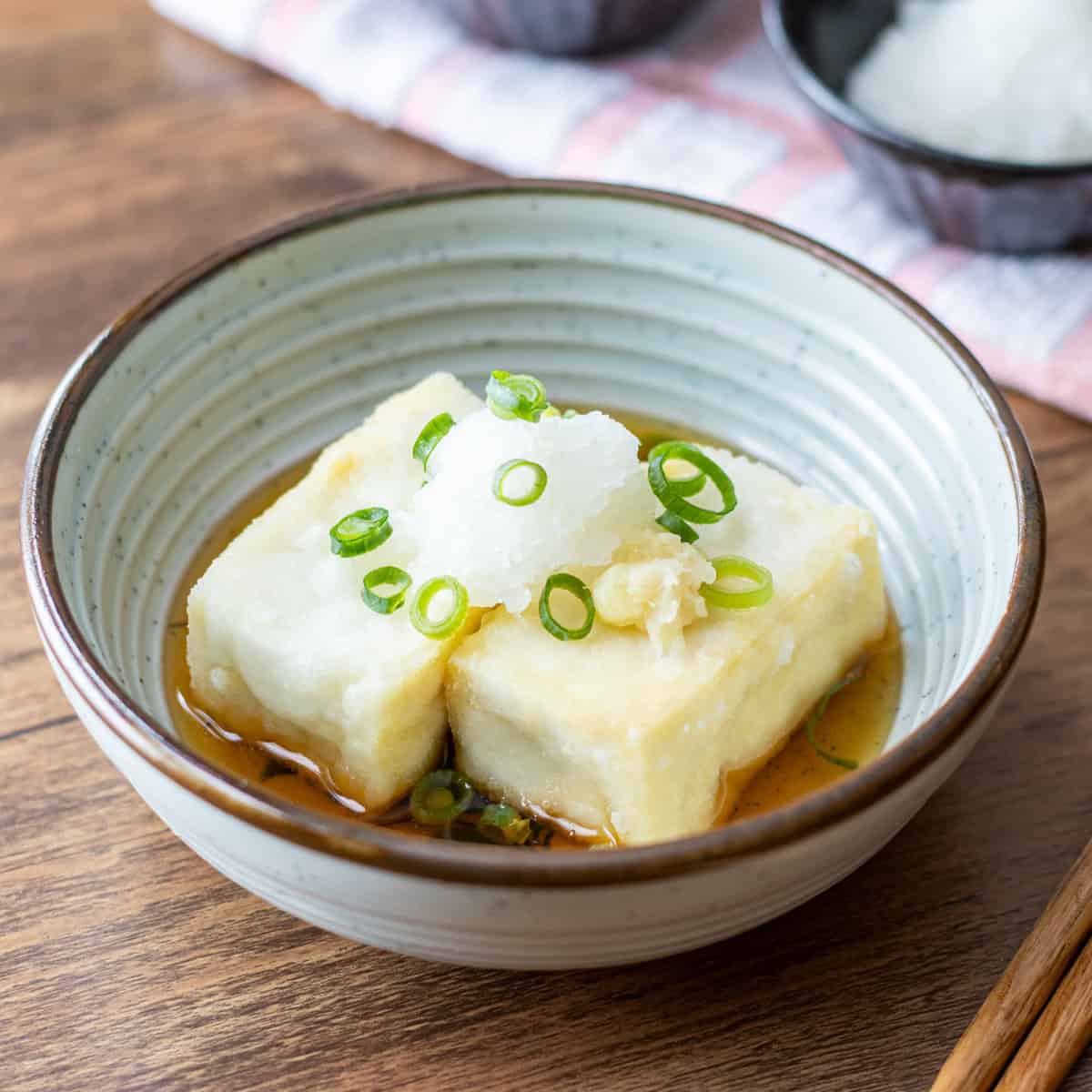
By properly draining the tofu, cutting it to the right size, and frying it to perfection, you can make this dish successfully and enjoy the authentic taste of Japan.
Jump to:
What is Agedashi Tofu?
Agedashi Tofu is a Japanese dish made by coating tofu with starch or flour, deep-frying it, and serving it with a seasoned dashi stock. The term "Agedashi" refers to the process of deep-frying and then serving.
The contrast between the crispy coating and the soft, delicate interior of the tofu, combined with the flavorful dashi-based sauce, is widely appreciated in Japan, making it a popular dish. It is a staple of traditional Japanese cuisine, and is also a popular item at izakayas (Japanese pubs) and in supermarket deli sections.
What makes this dish particularly enjoyable is that, despite being deep-fried, it doesn’t feel overly heavy. The dashi-based sauce helps keep it light and refreshing. The tofu itself has a mild flavor, making it easy on the stomach, yet still satisfying. By using kombu dashi or shiitake dashi, it can also be made into a great option for those following a plant-based diet.
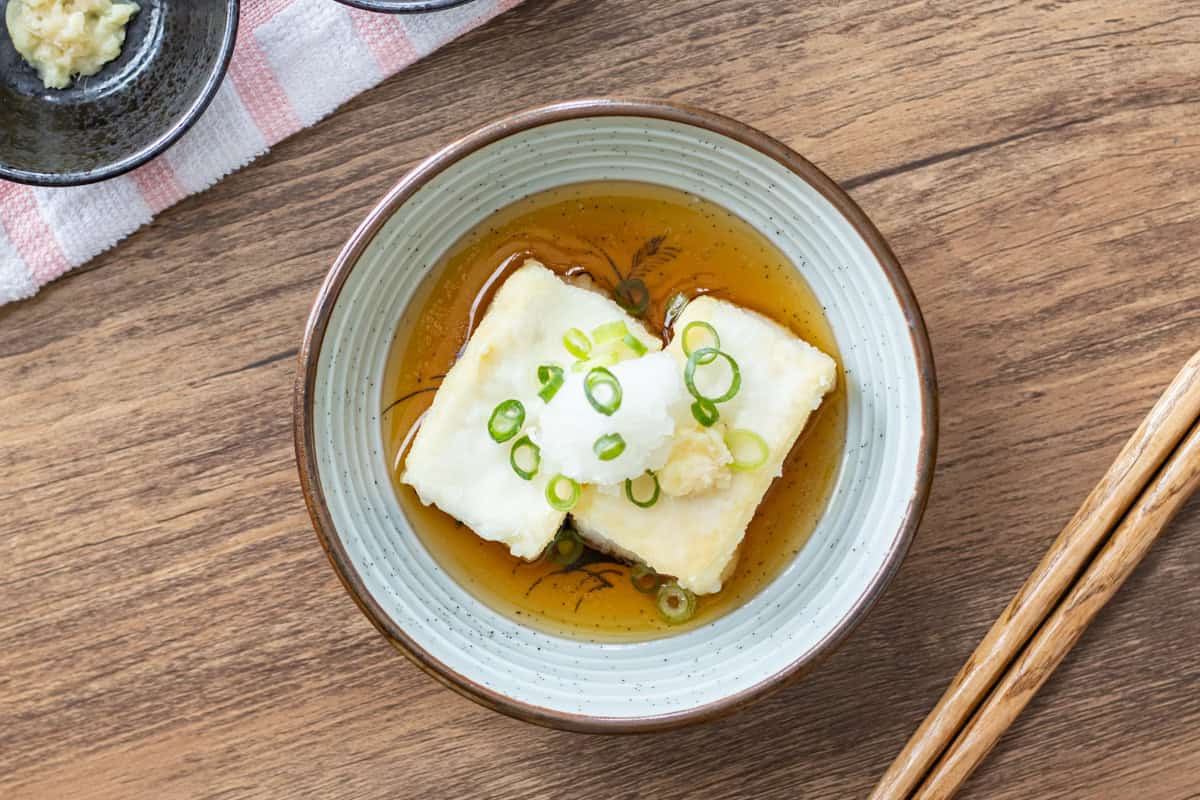
How to properly drain tofu
The key to making delicious agedashi tofu is achieving a crispy exterior while keeping the inside soft and fluffy.
The most important factor in ensuring this is draining the tofu properly. Since tofu contains a lot of moisture, using it without draining can cause oil to splatter during frying, make the batter peel off easily, and result in a soggy texture.
There are several common methods for draining tofu:
- Place a weight on top of the tofu and let it sit for about 30 minutes.
- Wrap the tofu in paper towels and let it sit for about 1 hour.
- Wrap the tofu in paper towels and microwave it on medium power (500W) for about 2 minutes.
- Boil the tofu for a few minutes.
- Sprinkle salt over the tofu and let it sit for about 15 minutes.
Each of these methods helps remove excess moisture from the tofu, but when making agedashi tofu, there is one important thing to keep in mind: don’t over-drain it. If you remove too much moisture, the texture inside will become dry and firm.
In this recipe, I use the method of sprinkling salt over the tofu, which also helps season it. When doing this, be careful not to leave it for too long, as this can draw out too much moisture and compromise the texture.
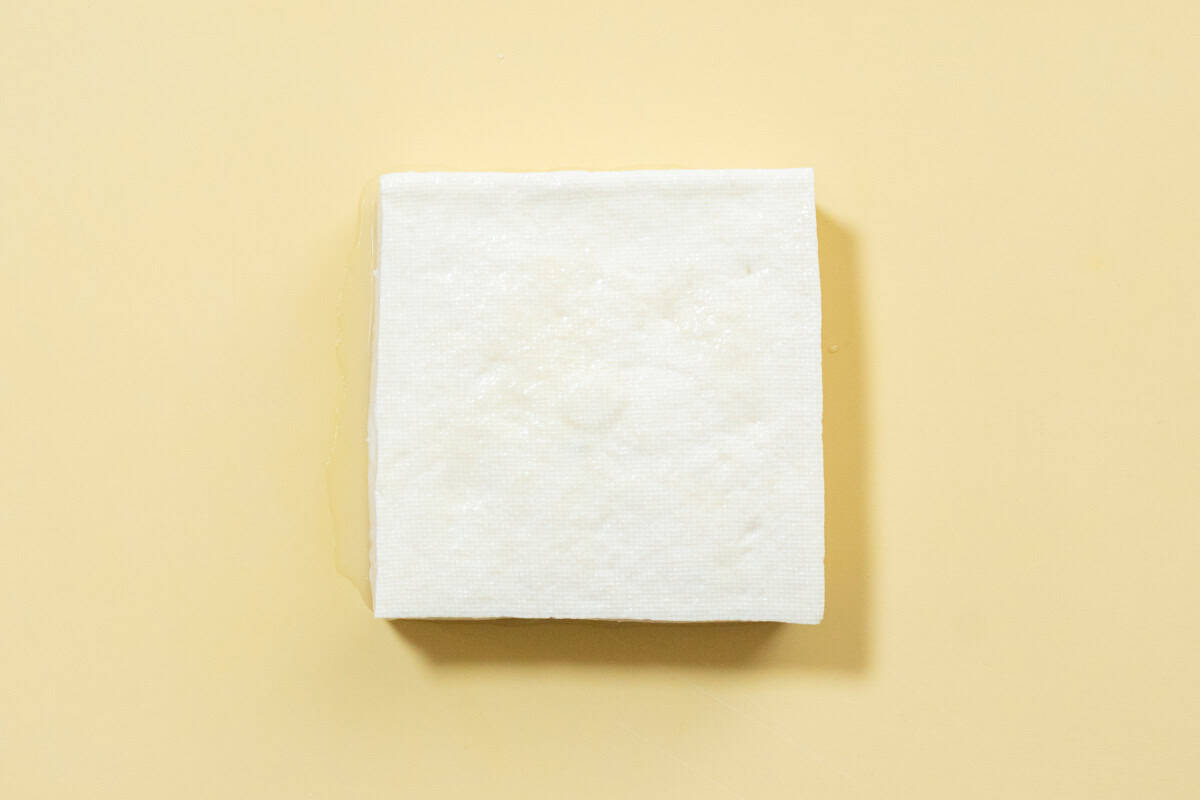
Cutting tofu to the right size
Cutting tofu to the right size is another key factor in making agedashi tofu. This is because the texture of the dish can vary significantly depending on the size of the tofu pieces you cut.
The larger the tofu pieces, the firmer their texture will be, while the smaller the pieces, the crispier their coating will become. The ideal size is a matter of personal preference, but in my experience, slightly smaller pieces are easier to fry and eat. In this recipe, I cut one block of tofu (11 oz/320 g) into 8 evenly sized rectangular pieces.
That said, this is just a guideline. It can be fun to experiment with different sizes based on your preference and enjoy the variations in texture.
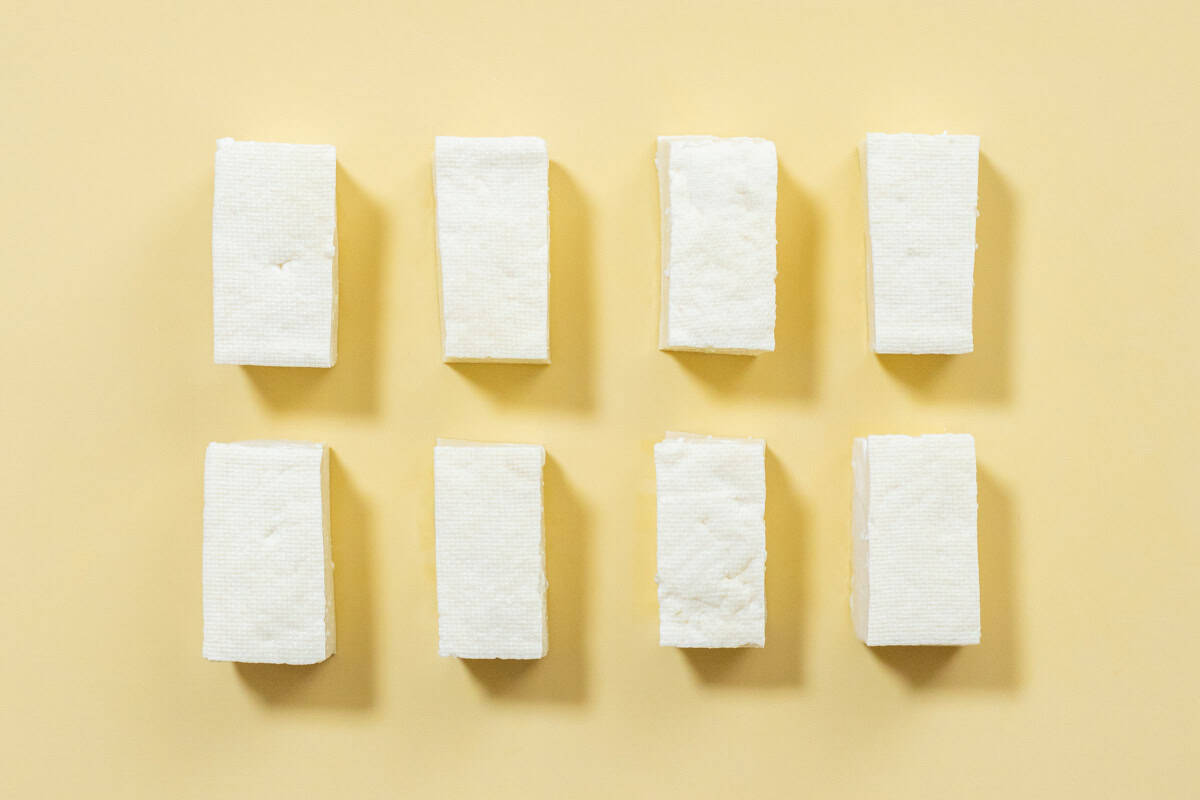
Starch vs flour
After cutting the tofu, coat it with either starch or flour. The choice depends on personal preference, but it can significantly affect the texture, as follows:
Starch: Creates a light, crispy coating.
Flour: Results in a softer, slightly moist coating.
In Japan, potato starch is more commonly used, and this recipe also calls for it. (Cornstarch can be used as a substitute, as it has a similar effect.) Using starch to create a crispy exterior enhances the contrast with the soft, delicate texture of the tofu inside.
However, if you prefer a slightly softer coating, you can replace the starch with flour—or even use a half-and-half mix of both. You might be surprised at how much the texture changes just by switching the type of coating.
Tips for perfectly deep-frying
Once the tofu is coated, it is time to start deep-frying. Here are three key points to keep in mind when frying:
- Fry the tofu immediately after coating it with starch or flour: Even after being drained, tofu continues to release moisture over time. If you wait too long after coating it, the moisture will cause the coating to come off. To prevent this, be sure to fry the tofu right after coating it.
- Fry the tofu at a temperature of 338-356℉ (170-180℃): Tofu has a high moisture content, so frying it at too high a temperature can cause it to splatter. On the other hand, if the temperature is too low, the coating won’t crisp up properly.
- Avoid touching the tofu right after adding it to the oil: If you move the tofu too soon, the coating may peel off. Let it fry undisturbed for at least a minute to allow the coating to set properly.
When the tofu floats to the surface of the oil and the coating turns light golden, it is ready. Be careful not to over-fry it, as this can dry out the inside. Once it is done, remove it from the oil immediately.
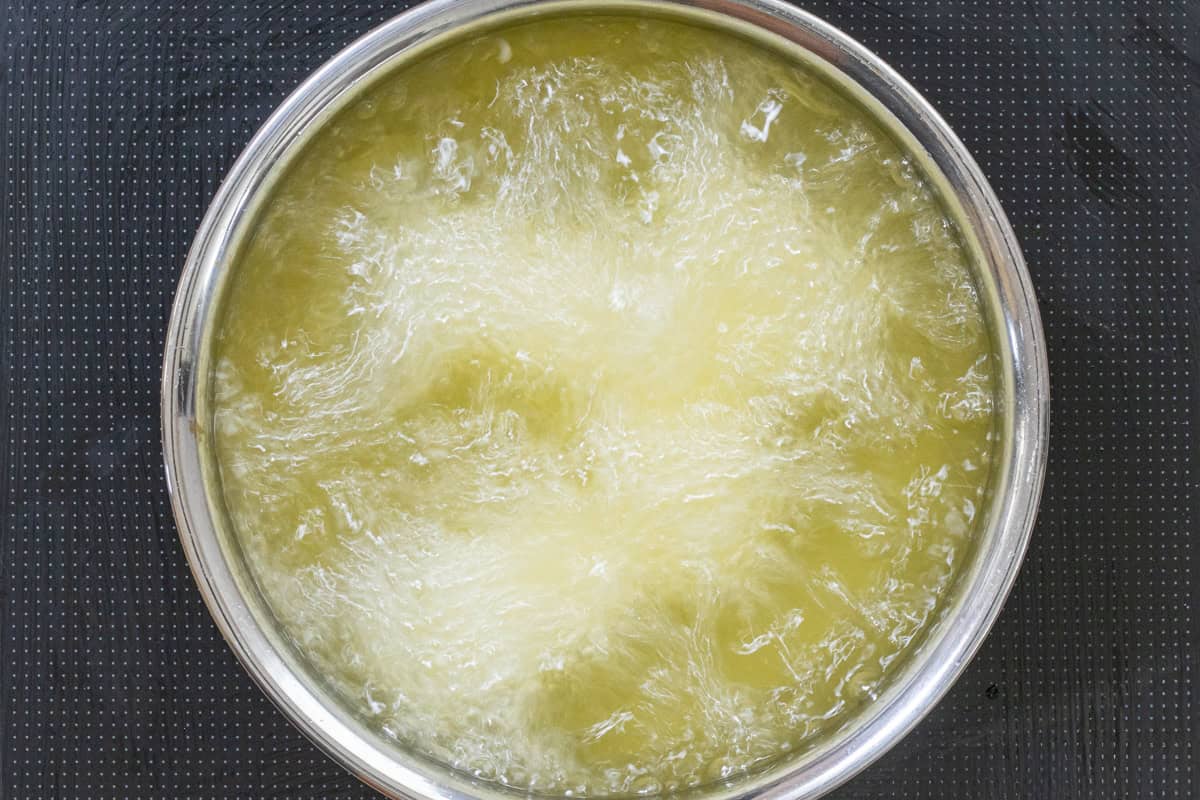
Preparing the dashi-based sauce
Pour warm dashi-based sauce over the fried tofu, and your agedashi tofu is ready to serve.
The sauce is typically made with dashi stock, mirin, and soy sauce, but if you have mentsuyu (Japanese noodle soup base), you can dilute it with water as a substitute. In either case, it is best to make the sauce slightly stronger in flavor to complement the mild taste of the tofu.
In this recipe, the sauce is prepared near the very end of the process. However, if you are worried about not being able to make it quickly enough before the tofu cools, you can prepare it in advance. In that case, be sure to reheat it just before pouring it over the tofu.
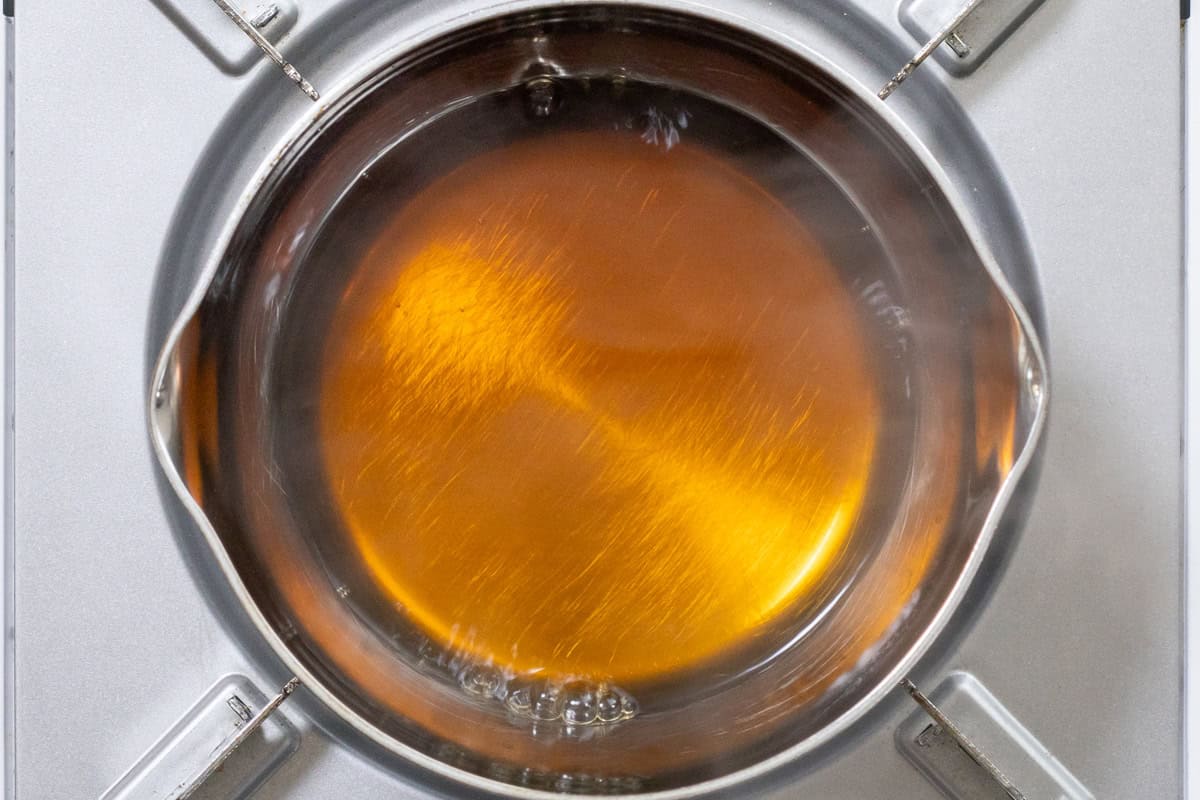
Common toppings
One of the great things about this dish is that you can enjoy slightly different flavors by adding various toppings. Some common toppings for this dish include:
- Grated daikon radish
- Grated ginger
- Green onions (scallions)
- Shaved bonito flakes
- Shichimi togarashi (Japanese seven-spice chili powder)
Among these, grated daikon is especially popular in Japan. Its refreshing taste helps balance out the richness of the dish, resulting in a more harmonious flavor. However, these toppings are entirely optional, so feel free to use them based on your personal preference.
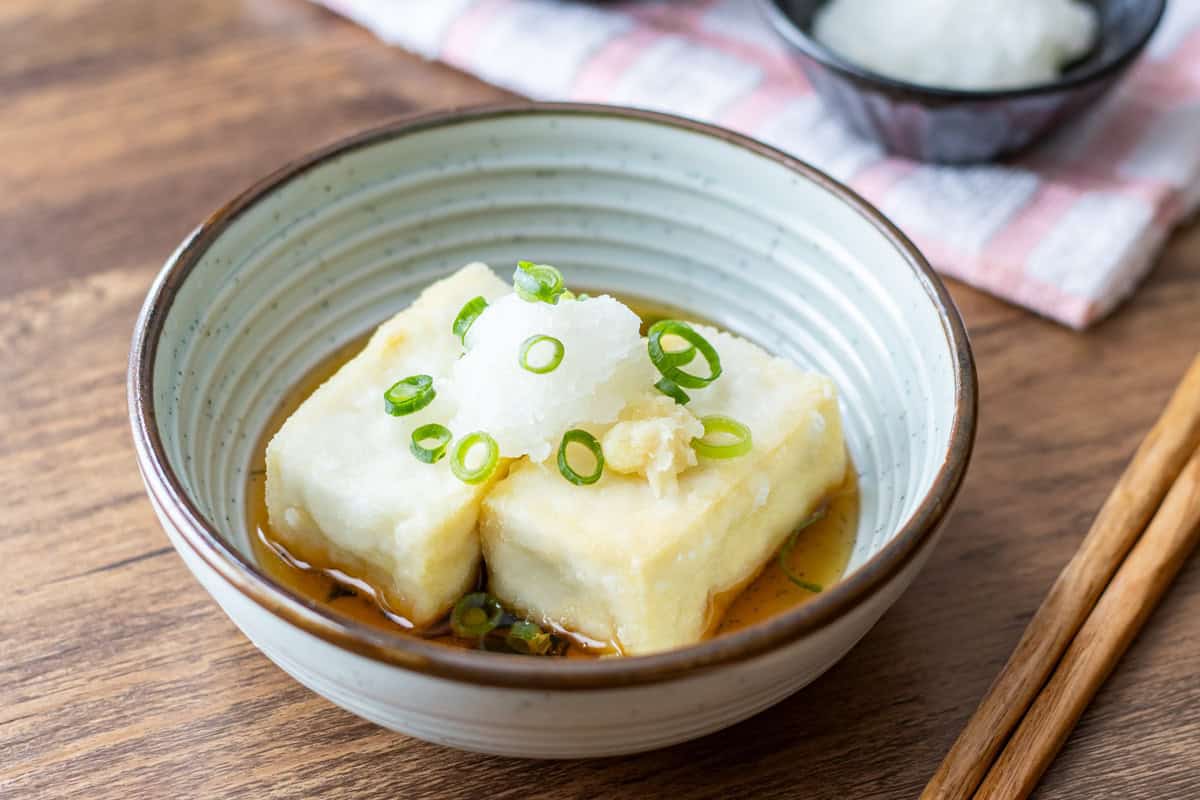
📋Step-by-step recipe
Ingredients
- 1 block momen tofu (medium-firm tofu) (about 10.6-14 oz/300-400 g)
- 3 Tbsp potato starch or cornstarch
- 1.4 inches (3.5 cm) or more of neutral oil in the pot (for deep-frying)
For the dashi-based sauce:
- ⅖ cup dashi stock (Please refer to the linked page for instructions on how to make it. For plant-based options, see the pages on kombu dashi and shiitake dashi.)
- 2 Tbsp mirin
- ⅛ tsp salt
- 1 Tbsp soy sauce
Toppings (optional):
- 1 green onion / scallion
- 1 inch daikon radish
- 1 tsp ginger
Instructions
🕒 Total: 30 mins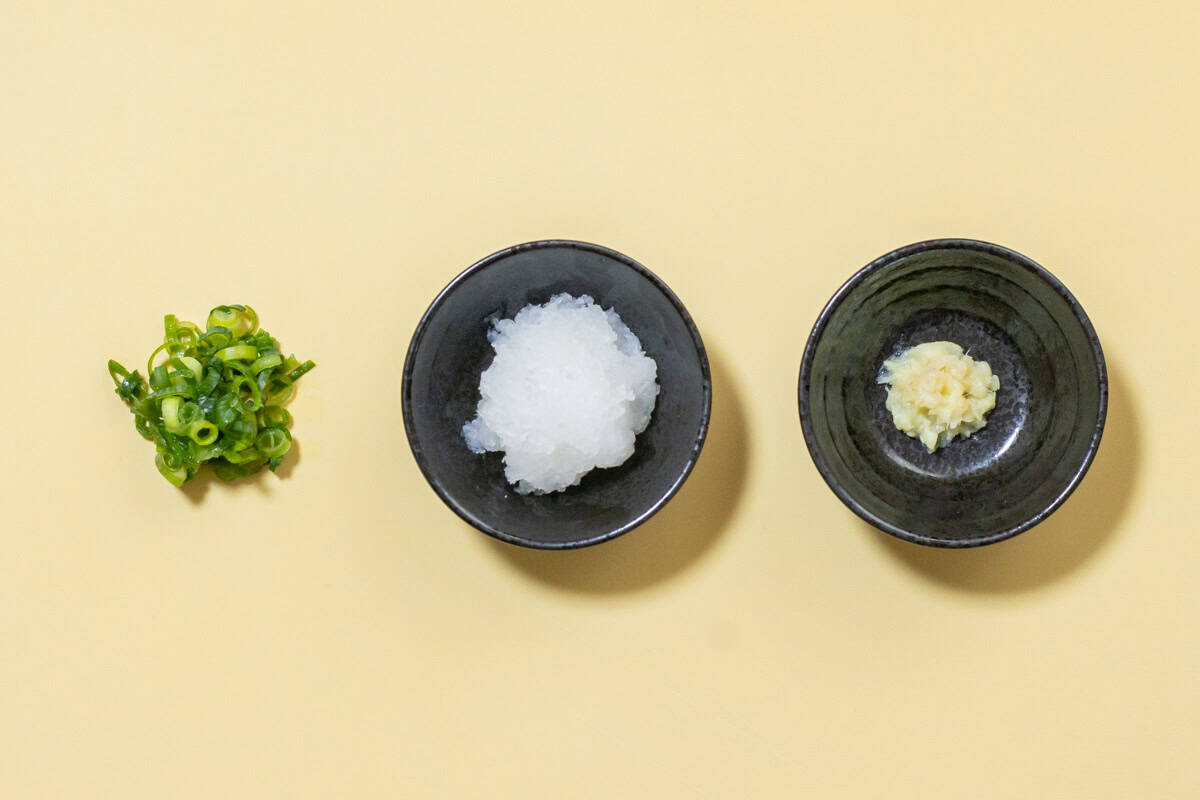
Step 1
Prepare the toppings in advance to suit your taste: thinly slice green onion, and grate daikon radish and ginger. Lightly squeeze out any excess moisture from the grated daikon.
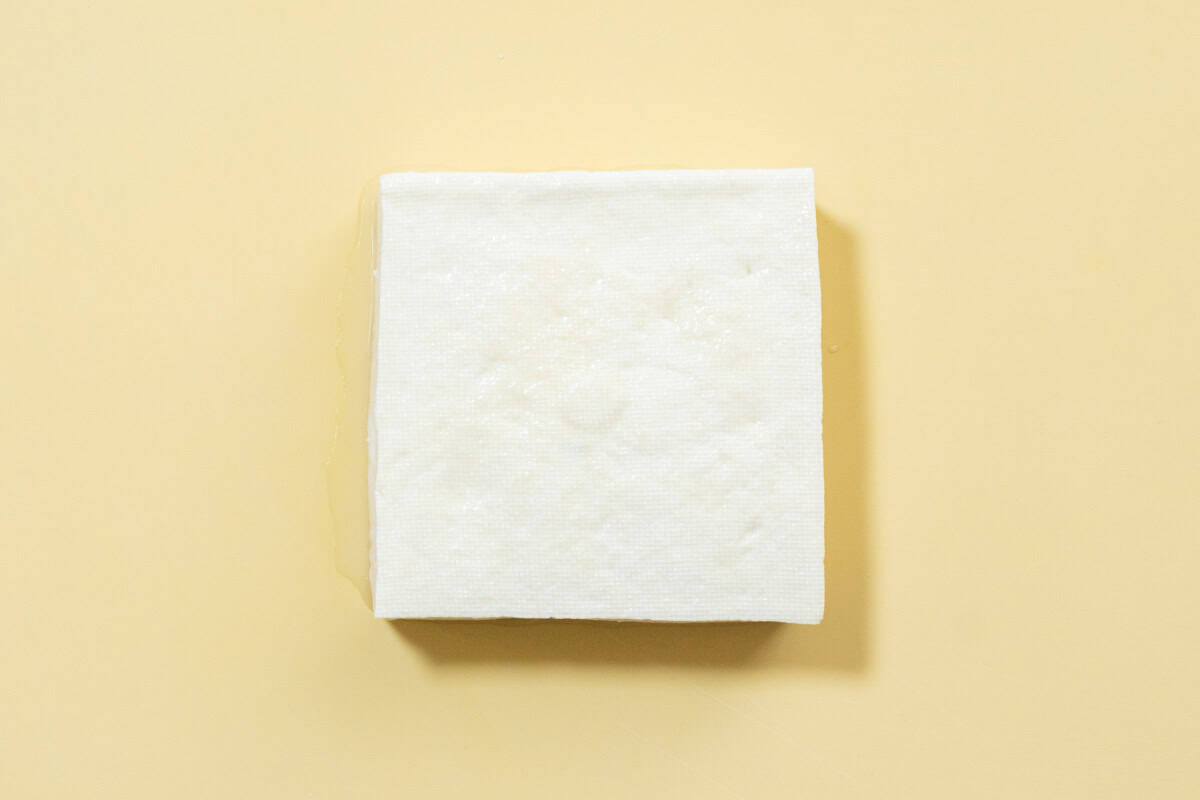
Step 2
Sprinkle salt evenly over the entire surface of the tofu and let it sit for about 15 minutes to draw out any excess moisture.
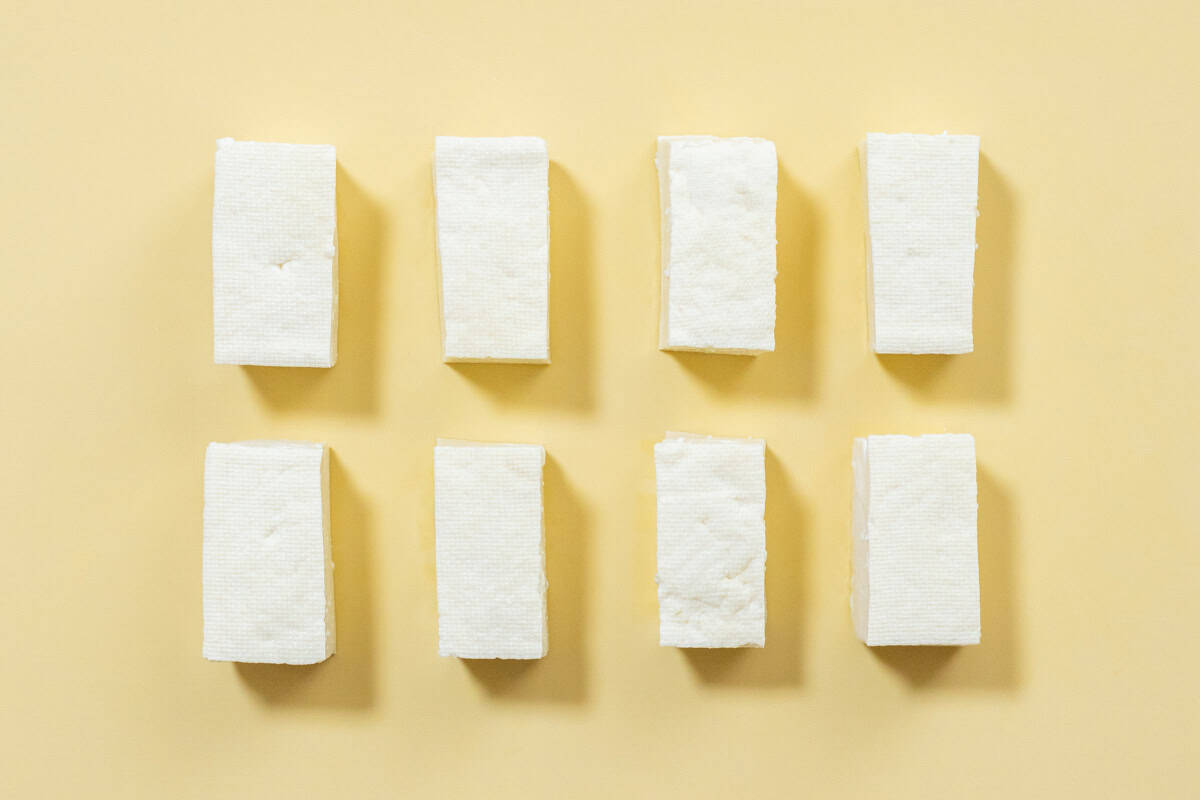
Step 3
Cut the tofu into 8-10 evenly sized rectangular or square pieces, and gently pat each piece dry with paper towels to remove excess moisture. Prepare a bowl of potato starch or cornstarch for coating.
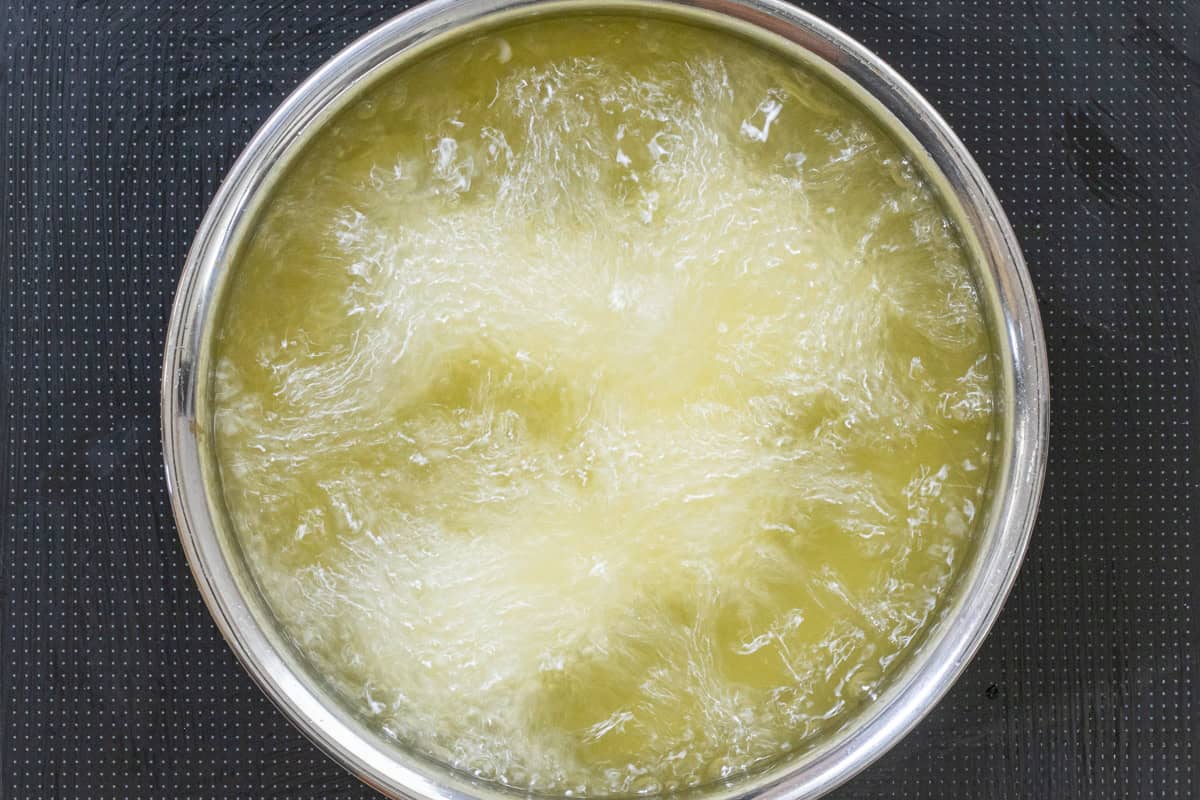
Step 4
Heat oil in a pot until it reaches 338-356℉ (170-180℃). Once the oil is hot, thoroughly coat each piece of tofu with the starch, then carefully add them to the oil one at a time. Deep-fry them for about 3 minutes, or until they float to the surface and turn slightly golden brown, which indicates that they are done.
Be careful not to add too many pieces at once, as this can cause the oil temperature to drop significantly. The tofu should occupy no more than about two-thirds of the oil’s surface area.
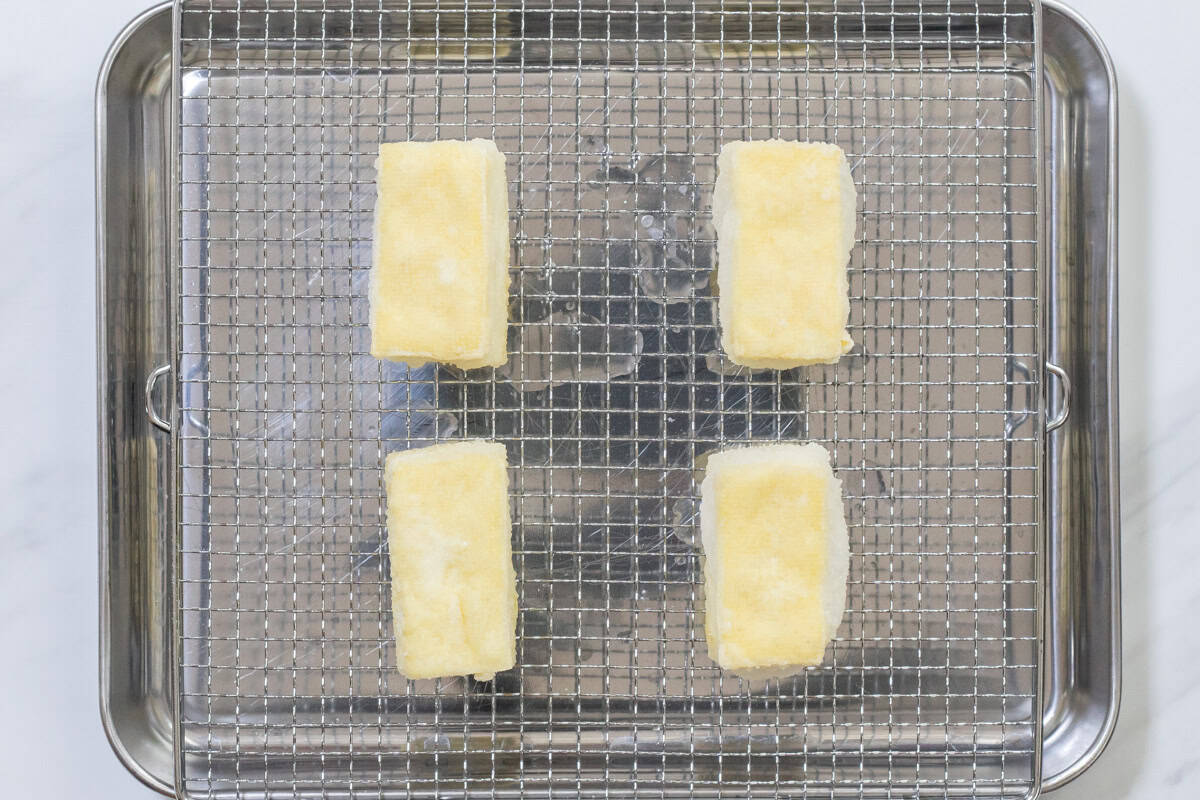
Step 5
Remove the tofu from the oil and let any excess oil drain off on a wire rack.
If there are any fried bits left in the oil, skim them out with a mesh skimmer or strainer, then repeat the frying process (steps 4 and 5) until all the tofu pieces are cooked.
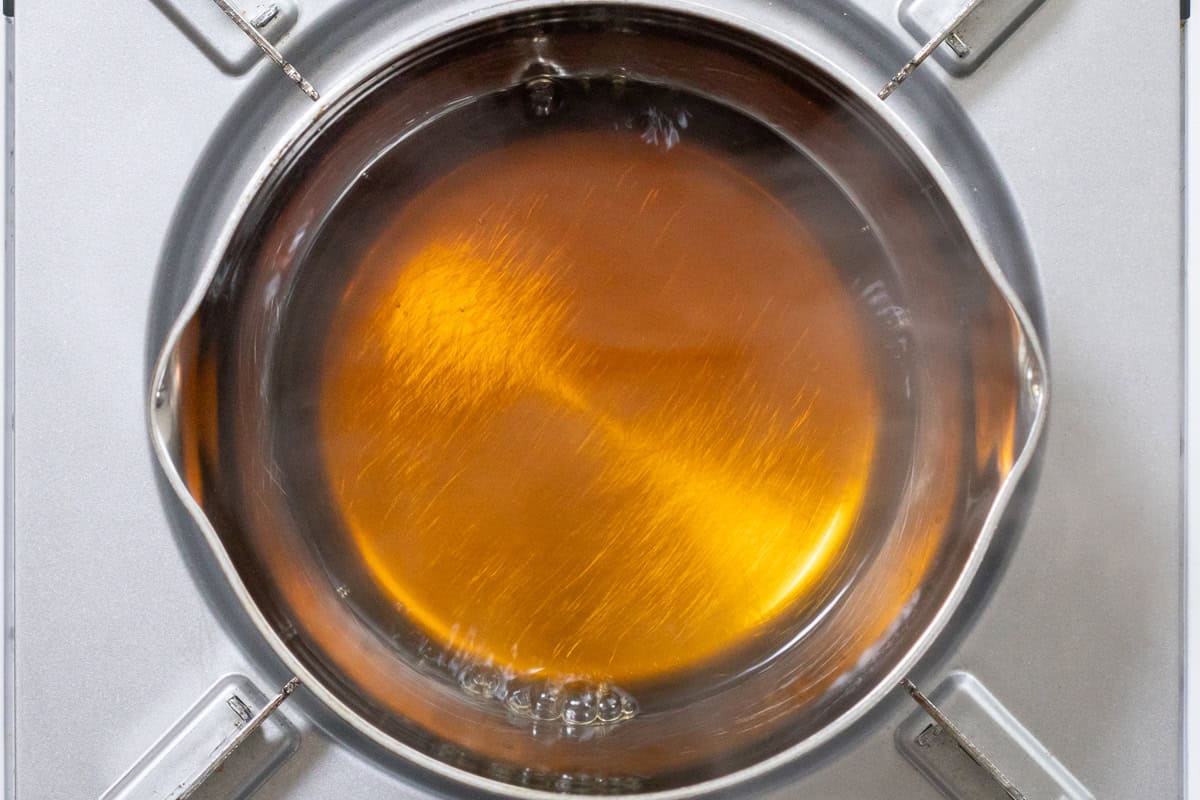
Step 6
In a small pot, combine the dashi-based sauce ingredients (dashi stock, mirin, salt, and soy sauce) and heat over medium heat. Once it reaches a simmer, reduce the heat to low and let it cook for about 30 seconds.
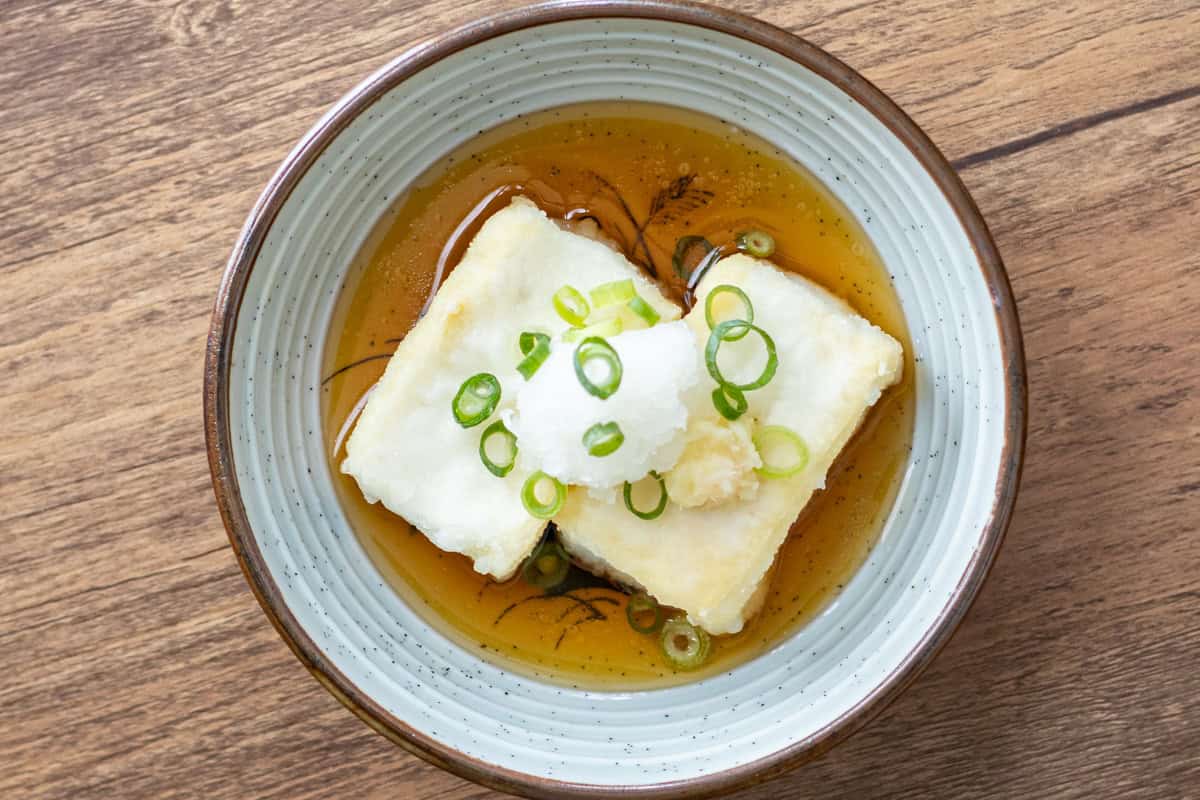
Step 7
Place the tofu in serving bowls and drizzle it with the dashi-based sauce from the pot. Top it with green onions, grated daikon, and grated ginger to taste.
To store
You can store it in the refrigerator for up to 3 days.
How to dispose of used cooking oil
After enjoying agedashi tofu, it is essential to properly dispose of the oil used for deep-frying. Pouring large amounts of oil directly down the drain can clog pipes.
In Japan, the most commonly recommended method is to use an oil-solidifying powder. This powder solidifies the oil, making it easy to dispose of.
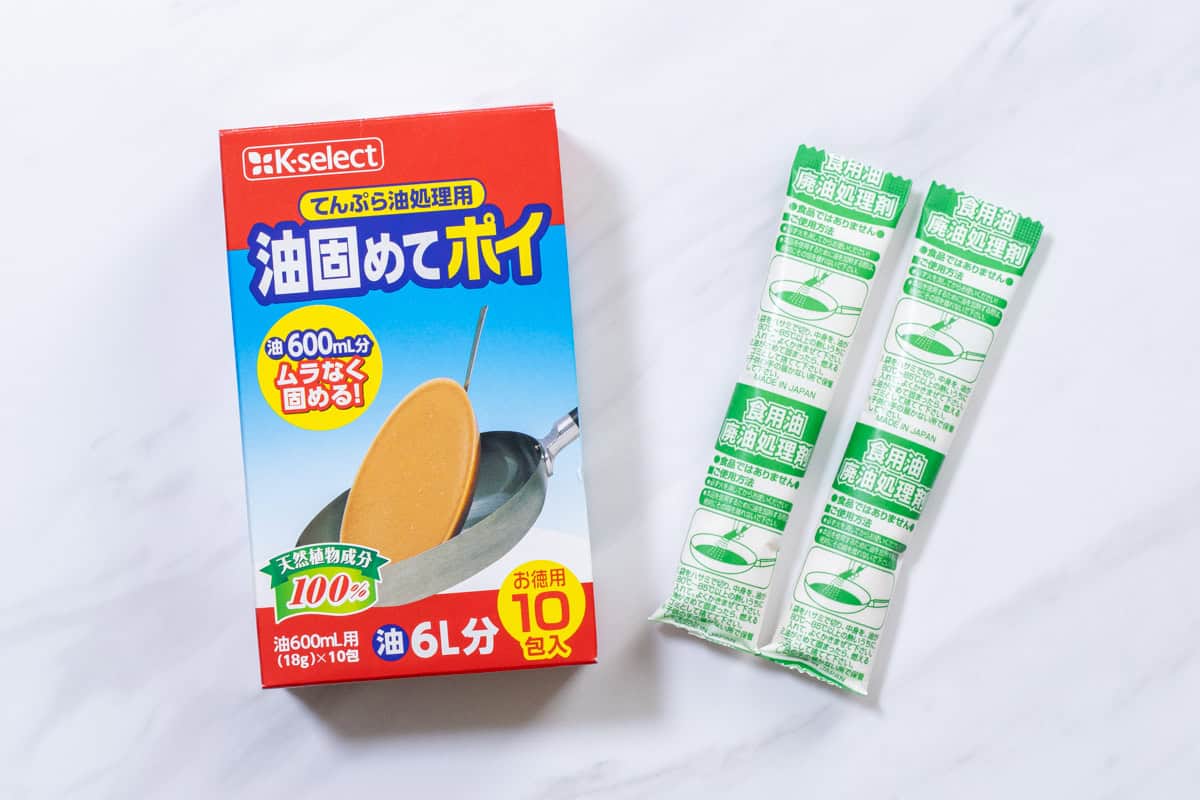
If this is not available locally, you can also use materials like newspaper to absorb the oil or pour it into an empty container after it has completely cooled.
When disposing of used oil, be sure to follow your local waste disposal regulations.
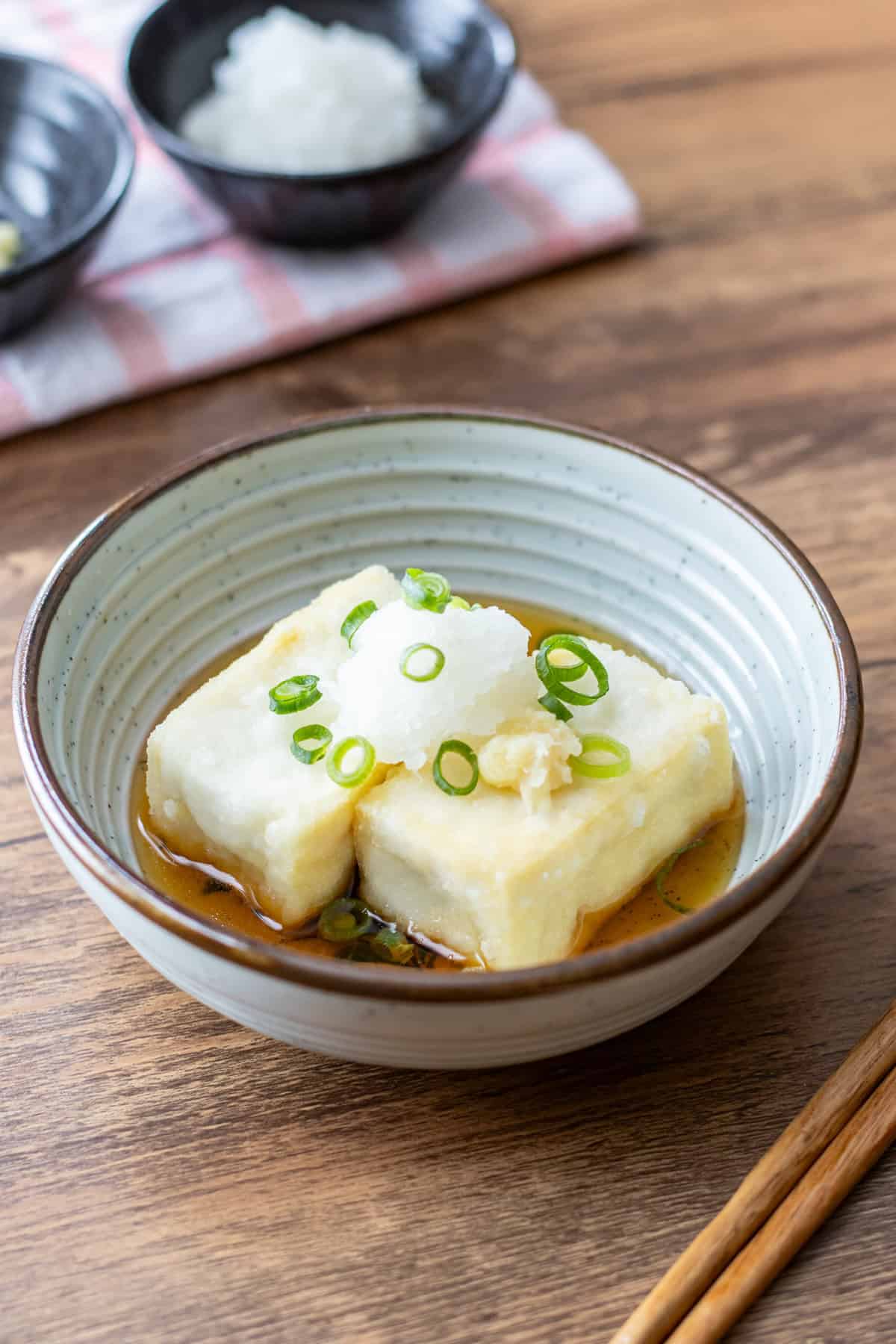
If you try this recipe, I’d love to hear what you think. Please consider leaving a review and star rating in the comments below. If you enjoyed it, I’d really appreciate it if you shared it with your friends.
More tofu recipes you'll probably love
Recipe card

Agedashi Tofu (Japanese Deep Fried Tofu in a Dashi-Based Sauce)
Ingredients
- 1 block momen tofu (medium-firm tofu) (about 10.6-14 oz/300-400 g)
- 3 Tbsp potato starch or cornstarch
- 1.4 inches (3.5 cm) or more of neutral oil in the pot (for deep-frying)
For the dashi-based sauce:
- ⅖ cup dashi stock (Please refer to the linked page for instructions on how to make it. For plant-based options, see the pages on kombu dashi and shiitake dashi.)
- 2 Tbsp mirin
- ⅛ tsp salt
- 1 Tbsp soy sauce
Toppings (optional):
- 1 green onion / scallion
- 1 inch daikon radish
- 1 tsp ginger
Instructions
- Prepare the toppings in advance to suit your taste: thinly slice green onion, and grate daikon radish and ginger. Lightly squeeze out any excess moisture from the grated daikon.
- Sprinkle salt evenly over the entire surface of the tofu and let it sit for about 15 minutes to draw out any excess moisture.
- Cut the tofu into 8-10 evenly sized rectangular or square pieces, and gently pat each piece dry with paper towels to remove excess moisture. Prepare a bowl of potato starch or cornstarch for coating.
- Heat oil in a pot until it reaches 338-356℉ (170-180℃). Once the oil is hot, thoroughly coat each piece of tofu with the starch, then carefully add them to the oil one at a time. Deep-fry them for about 3 minutes, or until they float to the surface and turn slightly golden brown, which indicates that they are done.Be careful not to add too many pieces at once, as this can cause the oil temperature to drop significantly. The tofu should occupy no more than about two-thirds of the oil’s surface area.
- Remove the tofu from the oil and let any excess oil drain off on a wire rack.If there are any fried bits left in the oil, skim them out with a mesh skimmer or strainer, then repeat the frying process (steps 4 and 5) until all the tofu pieces are cooked.
- In a small pot, combine the dashi-based sauce ingredients (dashi stock, mirin, salt, and soy sauce) and heat over medium heat. Once it reaches a simmer, reduce the heat to low and let it cook for about 30 seconds.
- Place the tofu in serving bowls and drizzle it with the dashi-based sauce from the pot. Top it with green onions, grated daikon, and grated ginger to taste.
Notes
- You can store it in the refrigerator for up to 3 days.
- The Nutrition Facts label assumes that the amount of oil absorbed by the tofu is approximately 6% of its weight.

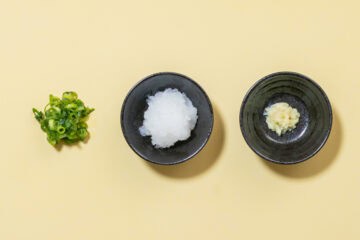
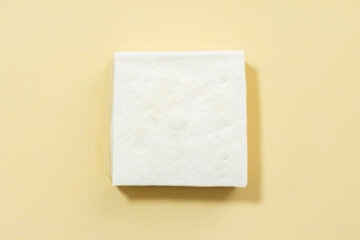

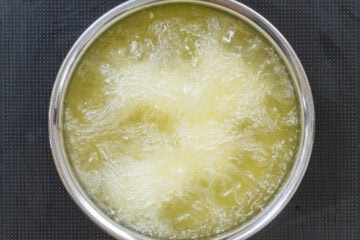
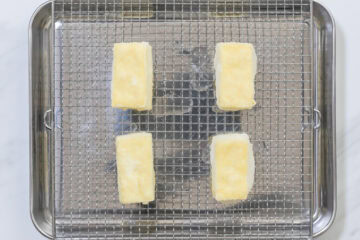

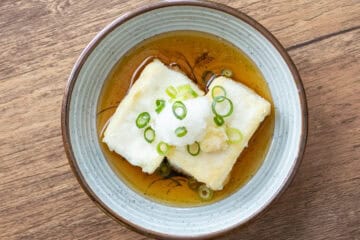

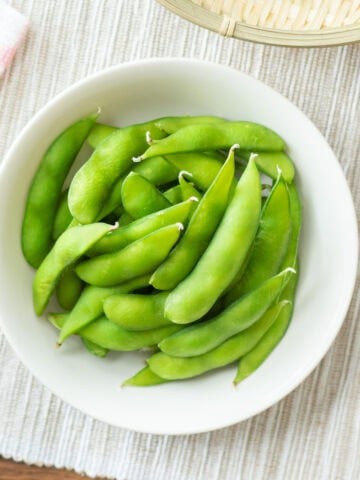

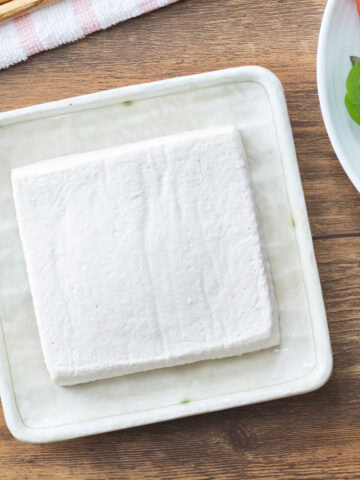
Leave a Rating and a Comment